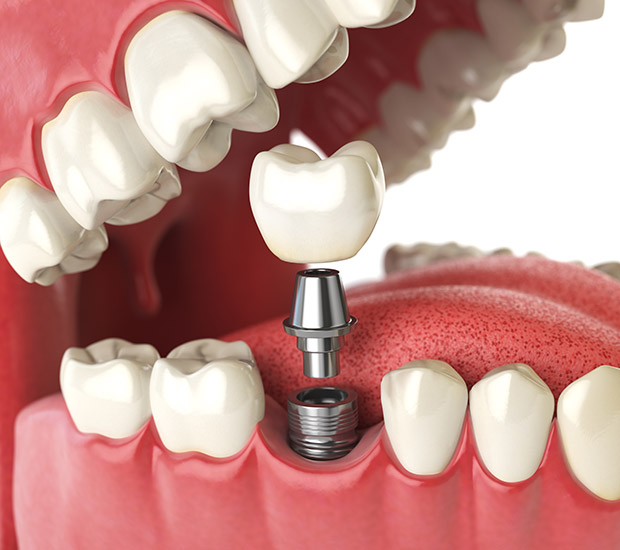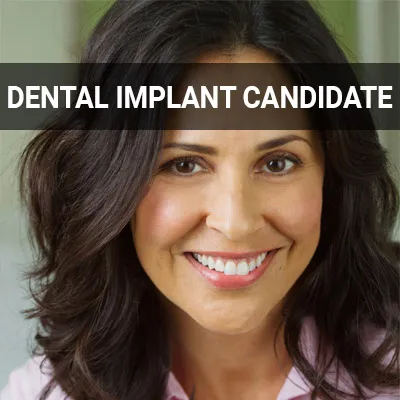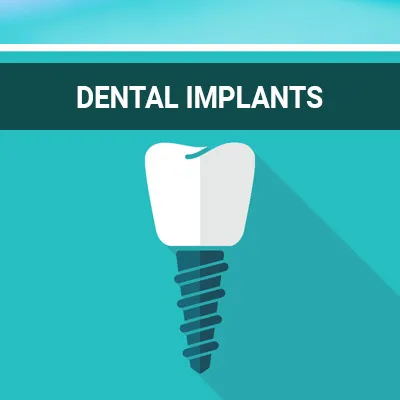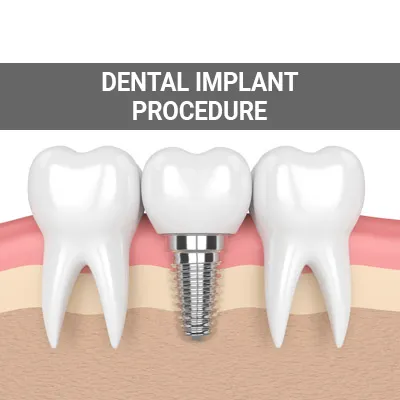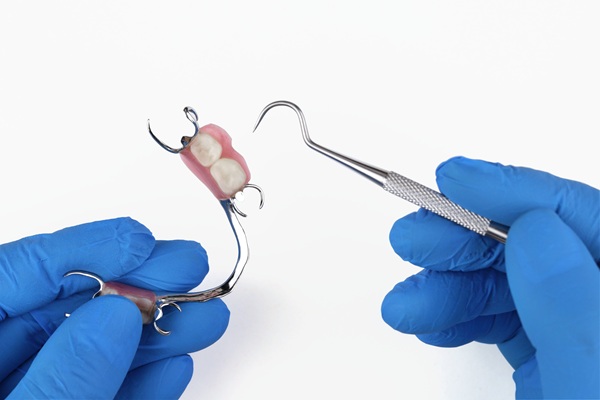Will I Need a Bone Graft for Dental Implants Los Angeles, CA
For people who have one or two missing teeth, dental implants are one of the most effective tooth restorations available. The implant needs support from a sufficiently thick mass of jawbone to support the dental restoration. A bone graft procedure involves transplanting bone to the implant site to make the jawbone thicker.
Bone graft procedures for dental implants are available at Dr. Robert B Tamaki, DDS in Los Angeles and the surrounding area. Although bone grafting is an option, it is not always necessary. If you want to know if you would need a bone graft for dental implants, call our office at (310) 402-0156 to book a consultation with Dr. Robert B Tamaki, DDS.
Bone Grafting for Dental Implants
The Centers for Disease Control and Prevention (CDC) states that as of 2023, nearly one in six adults aged 65 or older had lost all their teeth.. It is essential to restore lost bone in the jawbone through bone graft treatment after tooth loss. By completing this procedure, it can help to ensure a future implant and artificial tooth are properly supported long-term. A bone graft is a procedure to rebuild lost bone inside the jaw and recommended for patients who experience loss of bone density as a result of tooth loss.
Good candidates for a bone graft include those who are planning to undergo implants for missing teeth, those with tooth loss or gum disease, and those with bone loss. While the jaw and gums support natural teeth, the teeth also help to stimulate the jawbone. When tooth loss occurs, the supporting bone loses its primary purpose, and the process of resorption begins. This process occurs when the body absorbs calcium from the jawbone and distributes it to other areas of the body.
The lack of calcium in the jawbone makes it more difficult to support the implant. Resorption will also mean there is less bone that can bond with the titanium implant and help to solidify a firm hold of the implant. The purpose of a bone graft procedure is to rebuild bone density that may have become lost after the natural tooth becomes lost.
“It is essential to restore lost bone in the jawbone through bone graft treatment after tooth loss.”
Types of Bone Grafts
A bone graft is a procedure done to repair or rebuild the bone by transplanting bone tissues. After grafting, the bone will be strong and thick enough to hold dental implants. The transplantation process allows the dentist to recreate the missing bone and supporting tissues. The types of bone grafts include:
- Autograft – The bone for the grafting procedure can come from the patient’s body in parts like the hip, chin, jaw, or leg. An autograft means that the samples come from the patient with no risk of rejection.
- Allograft – Sometimes, the bone can be from another person, like a cadaver. This type is specially treated to remove bacteria and other biological elements to ensure the graft material is purely bone material. There are minimal to zero risks of rejection and saves the patient from a secondary bone transplant process.
- Xenograft – these are bone material taken from animal sources. The samples undergo treatment to make them safe to use for the patient.
- Other times, the bone can also come from a synthetic biocompatible material.
The choice of the source of the bone graft material depends on what the dentist believes would be the most suitable for the patient.
“A bone graft is a procedure done to repair or rebuild the bone by transplanting bone tissues.”
How Bone Grafting Works
There are different types of bone grafts, including autograft, allograft, xenograft, and an alloplastic graft. The majority of procedures use real bone, although a synthetic bone material is used for an alloplastic graft. The steps involved depend on the type of bone grafting procedure. It typically involves taking either natural bone or a synthetic bone material and placing it into the jawbone above the missing tooth through a minor surgical procedure. The bone must then heal and fuse with the existing bone in the area, which typically takes two to three months.
Bone grafting is a fairly common procedure. A 2016 study found that nearly half of 800 people with dental implants required a bone graft prior to implantation. A bone graft is beneficial for patients as it provides additional support to the dental implant. Otherwise, the dental implant placement process may have a higher risk of failure. The bone augmentation can improve the appearance, function, and oral health of the patient.
“It typically involves taking either natural bone or a synthetic bone material and placing it into the jawbone above the missing tooth through a minor surgical procedure.”
Check out what others are saying about our dental services on Yelp: Will I Need a Bone Graft for Dental Implants in Los Angeles, CA
Alternative Procedures for Bone Growth
Other procedures that can help to build the jawbone to hold dental implants include:
Sinus lift: Also known as a subantral graft procedure, a sinus lift is done to improve the bone height above the molar and premolar teeth.
Ridge expansion: Dentists perform this procedure to expand the upper jaw. The process entails dividing the bone and adding bone graft material to the gap to form new bone and widen the upper jaw.
Distraction osteogenesis makes it possible to elongate a shorter bone. The dentist will cut the bone and use a distractor to pull the bone piece apart gradually so that new bone can grow to fill the gap.
Ridge preservation: Also known as socket preservation, the procedure is essential to inhibit bone loss after tooth removal and prevent bone resorption, according to a literature reference from the American Association of Dental Consultants.
“Distraction osteogenesis makes it possible to elongate a shorter bone.”
Questions Answered on This Page
Q. How does the bone grafting procedure work?
Q. What are the different types of bone grafts?
Q. What are alternative procedures that can replace a bone graft?
Q. What are some procedures that help stimulate bone growth?
People Also Ask
Q. How should someone prepare for dental implant surgery?
Q. How are dental implants used to replace missing teeth?
Q. Is there anything patients can do to recover faster?
Q. What happens after the dental implant procedure?
Q. What can patients do to reduce their anxiety about receiving a dental implant?
Procedures That Improve Bone Growth
To accelerate bone healing, the dentist may recommend additional procedures, including platelet-rich plasma or bone morphogenetic protein placement.
Platelet-rich plasma: Platelets are a component of the blood and play roles like producing growth factors into wounds and formation of blood clots. The plasma has platelets in high concentration. When used for bone grafts, PRP can help encourage quicker healing and tissue regeneration for faster results.
Bone morphogenetic protein (BMP): This is a naturally occurring protein in the body that helps promote new bone growth. The material is synthesizable and can be used in bone augmentation and grafting treatments to increase jawbone mass. Using BMP removes the need to obtain bone graft material from external sources.
“To accelerate bone healing, the dentist may recommend additional procedures, including platelet-rich plasma or bone morphogenetic protein placement.”
Frequently Asked Questions About Bone Grafting
Q. What are the benefits of bone graft procedure?
A. With bone grafts, patients who may otherwise not be eligible for dental implants will be able to get dental implants. The procedure boosts the jawbone mass to make dental implant restoration successful over the years. After the jaw heals following a bone graft, it will be strong and stable to hold implant posts.
Q. What are the qualities of a good bone graft specialist?
A. It is important that you choose a bone graft specialist with the training and experience for performing the procedure. Preferably, the dentist should have a certification from the American Academy of Implant Dentistry. The procedure is more likely to be successful if handled by an experienced dentist.
Q. How do I know if the bone graft specialist has experience?
A. During your consultation with the dentist, you can ask for references and before and after pictures from previous procedures. You can also ask for an explanation about the With, including the risks, side effects, and medications. You can inquire about continuing education courses to be sure the dentist is up to date on new technologies, techniques, and medications.
Q. Can I get dental implants immediately after bone augmentation?
A. If there is adequate bone tissue around the implant, the dentist may place the implant during the bone augmentation procedure. With time, the bone augmentation will cause new bone to grow around the implant. If a significant part of the bone is missing, placing implants immediately after bone grafting is not possible or advisable.
Quality Dental Services Can Transform Your Smile
By visiting us as soon as possible, our team can help get you the professional treatment you need. Instead of waiting around and allowing the symptoms to get worse, we can provide you with treatment options.
Dental Implant Terminology
Call Us Today
We offer bone grafting for dental implants and help patients through the process. If you are interested in learning more about bone grafts as well as the implant process in general, then get in touch with us at 310-402-0156 today.
Helpful Related Links
- American Dental Association (ADA). Glossary of Dental Clinical Terms. 2024
- American Academy of Cosmetic Dentistry® (AACD). Home Page. 2024
- WebMD. WebMD’s Oral Care Guide. 2024
About our business, license, and website security
- Dr. Robert B Tamaki, DDS was established in 1985.
- We accept the following payment methods: Cash, CareCredit, Check, MasterCard, and Visa
- We serve patients from the following counties: Los Angeles County
- We serve patients from the following cities: Los Angeles, Santa Monica, Venice, Marina Del Rey, Redondo Beach, Hermosa Beach, Manhattan Beach, and Westchester
- CA (License #DDO-33386). View License Information and Specifics
- National Provider Identifier Database (1568559011). View NPI Registry Information
- Healthgrades. View Background Information and Reviews
- Norton Safe Web. View Details
- Trend Micro Site Safety Center. View Details
Back to top of Will I Need a Bone Graft for Dental Implants
